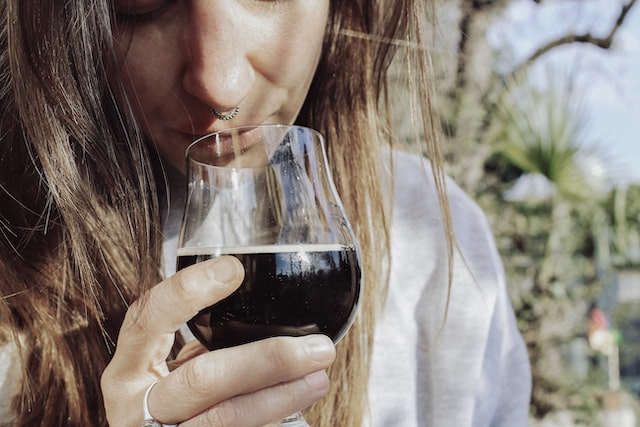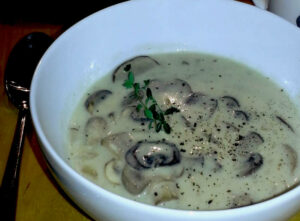Important Things To Know About Wine Aroma

Wine enthusiasts will spend hours savoring the aroma and flavor of their favorite vintage. The aroma of wine delivers an alluring experience for your sense of smell, setting the stage for what’s to come with every sip. However, wine aroma is more than just a pleasant experience for the nose. It’s also an essential aspect of wine tasting and understanding its quality. That’s why it’s critical to know the important things about wine aroma. This blog post will explore the different aromas of wine, why it’s crucial to pay attention to the scent, and what it tells you about the wine’s flavor. We’ll explain the impact of the environment on the aroma, how to properly smell wine, and even cover the language used to describe the scent of different types of wine. With the information provided in this post, you’ll be well on your way to developing your palate and expanding your knowledge of wine.
Wine aroma is an important aspect of wine tasting that can greatly impact the overall experience.
Wine aroma is a vital factor in wine tasting that can significantly affect the overall experience. Aroma refers to the diverse range of fragrances that can be perceived from wine, such as fruity, floral, herbal, or spicy. Aroma is produced by volatile organic compounds that are released from the wine when it is swirled or sniffed. They interact with receptors in the nose, producing an impression that can vary from subtle to intense. The aroma of a wine can reveal important aspects about its origin, grape varieties, fermentation, and aging process. It can provide clues about the wine’s freshness, quality, and complexity, and can guide the taster’s expectations of flavor and texture. The ability to identify and appreciate wine aromas is a skill that can be developed with practice and experience, and can enhance the pleasure and satisfaction of wine consumption.
Aroma is influenced by the grape variety, fermentation, and aging process.
When it comes to understanding wine aroma, there are several key factors at play. Grape variety, fermentation, and aging can all have a significant influence on the scent of a wine. Grape variety plays an especially important role since different grape varieties will produce different aromas. For example, Cabernet Sauvignon has a distinctive aroma of blackcurrant and black cherry, while Chardonnay is known for its hints of vanilla and butter. The fermentation process can also impact the aroma of a wine, as the release of certain chemicals can produce fruity, floral, or spicy notes. Finally, the aging process can further enrich the aroma of a wine, with oak barrels often lending a smoky or toasty scent to the final product. Understanding these factors is crucial for anyone looking to deepen their appreciation of wine aroma.
Common wine aromas include fruity, floral, herbal, spicy, and earthy.
Wine aroma is an essential element that enhances the overall experience of drinking wine. Without the aroma, wine would be tasteless and dull. The wine aroma is a complex mixture of various flavors that tickle our senses and make us appreciate the drink even more. Common wine aromas include fruity, floral, herbal, spicy, and earthy notes. These aromas come from the compounds present in the wine, such as volatile organic compounds (VOCs), esters, and terpenes. Each compound creates a unique aroma that adds to the overall flavor profile of the wine. Understanding different wine aromas can deepen your appreciation and enjoyment of wine, as you can more easily identify and appreciate specific flavors and scents in the wine.
The aroma can provide clues about the wine’s age, quality, and style.
When it comes to wine tasting, the aroma can provide critical clues to help you understand the wine’s age, quality, and style. The way a wine smells can make a significant difference in how it tastes, and it can give you an idea of what to expect before taking the first sip. Aroma can vary depending on the type of grape, the winemaking process, and the storage conditions. For instance, young wines tend to have fruity aromas while aged wines have more earthy and woody notes. The quality of wine can be deduced by the intensity and complexity of the aroma, especially when it comes to premium wines. Finally, the style of the wine can also be hinted at through the aroma, providing insight into whether the wine is light and crisp or full-bodied and complex. Understanding the aroma can significantly improve your wine tasting experience and help you select the best wine to suit your preferences.
It’s important to swirl the wine in your glass to release the aroma before smelling it.
One of the most important things to know about wine aroma is the importance of swirling your glass before smelling it. This technique helps release the wine’s aroma, allowing you to fully appreciate the flavors and nuances hidden within each glass. Give your wine a swirl before raising it to your nose and take a deep breath in, taking note of any scents that you might detect. These could be fruity, floral, spicy, or even earthy, and can give you an idea of the type of grape that is used to make the wine, as well as the climate and region where it was produced. Swirling your wine glass is an essential step in wine tasting that can enhance your overall experience of drinking a fine wine.
The sense of smell is essential for identifying wine aromas accurately.
The sense of smell is one of the essential factors for identifying wine aromas accurately. Unlike taste, which is limited to specific areas of the tongue, our sense of smell is more complex, and our brains can distinguish between thousands of different smells. Aroma is a crucial aspect of wine, and it plays a significant role in the overall wine-tasting experience. The aroma of the wine can indicate its origin, grape variety, and age. The olfactory bulb in our brains is connected to the amygdala and hippocampus, which plays a significant role in emotional and memory associated responses. Knowing the importance of smell in wine tasting can help you appreciate wine more through understanding the aromas present in the drink.
Tasting notes and wine aroma charts can help you develop your wine aroma vocabulary.
If you’re a wine enthusiast, you must know that tasting notes and wine aroma charts can be extremely useful in developing your wine aroma vocabulary. Tasting notes are descriptions of the flavors and aromas present in a wine, while aroma charts provide a visual representation of the various aromas that can be found in different types of wine. By using these tools, you can train your nose to pick up on subtle scents, and develop a better understanding and appreciation for the complexity of different wines. This can greatly enhance your wine-tasting experience, and help you choose wines that suit your taste preferences. As you become more familiar with these tools, you can even start using them to describe wines you taste to others and impress your friends with your newfound knowledge.
Aroma is subjective and can vary depending on the individual’s nose and personal experiences.
When it comes to wine aroma, it’s important to remember that perceptions are subjective and can vary depending on the individual’s nose and personal experiences. While some people may describe a certain wine as having an aroma of vanilla or berries, others may pick up scents of tobacco or leather instead. These variations are because different people have different thresholds for certain aroma compounds, as well as different associations with the smells they perceive.
Additionally, our past experiences can influence how we perceive wine aromas. For example, if someone grew up eating a lot of fresh fruits and berries, they may be more sensitive to detecting fruity aromas in wine. Conversely, if someone has a lot of experience with leather goods, they may be more likely to pick up on leather notes in wine.
So, while it’s useful to learn about common wine aromas and their characteristics, it’s important to keep in mind that what one person perceives may not be the same as what another person perceives. Don’t be afraid to explore different wine aromas and develop your own vocabulary for describing them, based on your individual sensory perceptions and experiences.
In conclusion, understanding wine aroma is an essential aspect of fully enjoying and appreciating wine. By knowing the different categories of aromas, such as primary, secondary, and tertiary, and recognizing what they mean, wine drinkers can identify and appreciate the nuances of different wines. Additionally, there are many factors that can influence the aroma of wine, such as grape variety, winemaking techniques, and aging process. By educating yourself about wine aroma and exploring different wines, you can enhance your wine-drinking experience and even develop a deeper appreciation for the art and science of winemaking.




